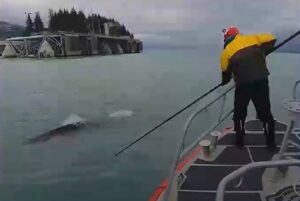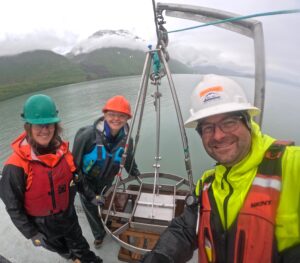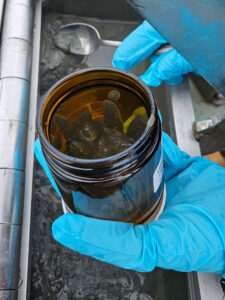In 2023, a Federal law was passed that could affect Alyeska’s contracted fleet of fishing vessels trained to help respond in case of an oil spill in Prince William Sound.
Fishing fleet available for a quick response
When the Exxon Valdez oil spill happened, the response was delayed. Much of the damage could have been lessened if clean-up efforts had started immediately. One of the most important lessons of that spill was that local fishing crews can help with a quick response.
The local fishing crews who joined the 1989 response realized that pulling oil spill boom was similar to pulling a net of fish. They also knew the region’s waters well, and were aware of dangers like shallow areas or changing tides that could leave a vessel stranded, among other hazards.
In the years since the spill, Alyeska formalized this relationship, developing a program to make sure they have a contracted fleet of vessels that are trained, on-call, and immediately available to support a response in case of another spill. Today, Alyeska holds contracts with more than 350 of these vessels. They invest in training for crew members every year to make sure they are always ready to respond.
Alyeska trains the crews to handle oil spill response equipment, tow oil spill boom in proper formation, and tow the small barges used to store the oil and water mix that is recovered during a spill response. They are skilled in deploying, operating, and maintaining this equipment.

Consequences for the contracted fishing vessel program
If a real event were to occur, Alaska’s fishing crews would be ready to respond.
However, a section of the National Defense Authorization Act of 2023 that was intended to exempt fishing vessels from the inspection requirements when working an oil spill was interpreted by Coast Guard to require the vessels to undergo inspections.
These vessels are uninspected and were designed and built specifically for fishing, not oil spill response. These vessels have not been subject to Coast Guard inspection before and many would not be able to meet inspection requirements, meaning they would be excluded from participating in a response.
“Trying to replace uninspected fishing vessels with vessels that meet Coast Guard inspection requirements would completely dismantle the program that has been part of the response system in Prince William Sound for decades,” said Donna Schantz, executive director for the Council. “This would greatly diminish oil spill response capabilities in our region, as well as the entire nation. The trained fleet, made up of contracted local fisherman who understand the waters, are the backbone of the response system and are essential to help mitigate impacts to people, communities, economies, and the environment.”
Workgroup partnership looking for a solution
The Council has been participating in a workgroup to help develop a solution that would allow the current fleet to remain in operation. Members include the Council, Cook Inlet Regional Citizens Advisory Council, Alyeska/SERVS, and other industry and oil spill removal organizations across the country.



